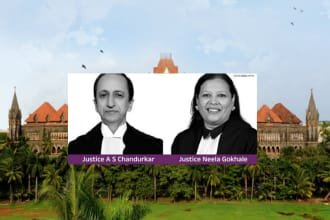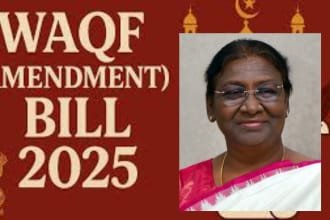In a significant development, the Bombay High Court on May 9, 2025, issued notice to the Maharashtra government and ordered status quo on any demolition-related activities concerning Savarkar Sadan—a building steeped in India’s nationalist history. The Public Interest Litigation (PIL) was filed in response to news reports indicating imminent demolition of the iconic building that once served as the residence of Vinayak Damodar Savarkar, a prominent figure in India’s freedom struggle and Hindutva movement.
The Court’s interim order provides much-needed relief to concerned citizens and heritage activists who view the structure not only as a symbol of India’s complex socio-political legacy but also as a site deserving state protection.
Background of the Petition
Savarkar Sadan, located in Dadar West, Mumbai, was the home of VD Savarkar, one of the most influential and controversial political thinkers in Indian history. In recent years, concerns have emerged about its preservation, especially as the building ages and becomes vulnerable to redevelopment pressures.
The PIL, filed by the Hindu organization Abhinav Bharat Congress through its President Dr. Pankaj K. Phadnis, urges the Maharashtra government to immediately notify Savarkar Sadan as a protected heritage site. The plea also calls upon the Central government to classify the property as a Monument of National Importance, despite its ineligibility under the usual “100-year” criterion.
Key Judicial Developments
A Division Bench of the Bombay High Court, comprising Justice AS Chandurkar and Justice Neela Gokhale, heard the matter on May 9. The Bench issued notice to the State of Maharashtra and directed all stakeholders to maintain the status quo until the next hearing. The Court further instructed the State to clarify the timeline within which a decision regarding heritage notification would be made.
Reasons Cited in the Petition
According to the PIL, the Maharashtra government has failed to act on a recommendation that has been pending for over 15 years to include Savarkar Sadan in the Mumbai Heritage List. The petitioner warned that continued delay amounts to administrative apathy, leaving the historically significant structure exposed to redevelopment or outright demolition.
The PIL argues that the building is associated with a “key figure in the Hindu nationalist movement,” and its destruction would cause irreparable damage to the legacy of India’s freedom struggle. The plea also contrasts the government’s inaction with its protection of Jinnah House—the former residence of Pakistan’s founder Muhammad Ali Jinnah—which has already been declared a protected heritage structure.
Reliefs Sought
The petitioner, Dr. Pankaj K. Phadnis, appearing in-person, sought the following:
- Immediate declaration of Savarkar Sadan as a heritage site.
- Status quo orders to prevent demolition or alteration until final disposal of the petition.
- Direction to the Union Government to explore whether Savarkar Sadan can be declared a Monument of National Importance, overriding the 100-year threshold in exceptional cases.
- A compensation policy for the legal heirs of Savarkar, should the declaration lead to restrictions on redevelopment and usage.
Legal Representation
The case has drawn attention from multiple stakeholders and government bodies. Additional Government Pleader Abhay Patki and Assistant Government Pleader Manisha Gawade represented the State of Maharashtra and Mumbai Police Commissioner. Advocate Anuja Tirmali, instructed by Advocate Komal Punjabi, appeared for the Municipal Corporation. Advocate DP Singh represented the Union of India.
The diverse legal representation reflects the multifaceted nature of the dispute, touching upon heritage preservation, administrative law, historical recognition, and property rights.
Broader Legal and Cultural Significance
The legal fight to preserve Savarkar Sadan is part of a broader debate on how India protects structures associated with its nationalist and colonial legacies. In recent years, heritage conservationists have increasingly criticized state authorities for a lack of proactive policies regarding buildings of political or cultural importance that fall outside the colonial or Mughal architectural paradigms.
While the Archaeological Survey of India (ASI) governs the classification of Monuments of National Importance, the criteria often exclude 20th-century buildings due to the “100-year” rule. However, the PIL contends that exceptions must be made in the interest of national sentiment and historical continuity.
The case could potentially set a judicial precedent for recognizing the symbolic and ideological value of relatively newer historical sites.
Comparative Case: Jinnah House
One of the petition’s strongest arguments lies in its reference to Jinnah House, the sea-facing residence of Muhammad Ali Jinnah in Mumbai’s Malabar Hill, which enjoys protected status despite being politically controversial. The PIL questions why similar protection has not been extended to the residence of a freedom fighter who contributed to the ideology of Hindutva and shaped modern Indian political discourse.
This comparison sharpens the legal and ethical discourse around selective heritage conservation and poses questions about the ideological neutrality of state preservation policies.
Implications and the Road Ahead
The Bombay High Court’s interim order to maintain status quo brings temporary relief, but the larger questions remain unanswered. Will the State and Central governments act swiftly to preserve Savarkar Sadan? Will the judiciary stretch heritage laws to accommodate exceptions of ideological and historical importance?
The answer to these questions will determine whether India adopts a more inclusive approach to heritage conservation—one that recognizes not only architectural merit but also political and cultural memory.
For now, the fate of Savarkar Sadan hangs in the balance, as the court awaits responses from the Maharashtra government, the Union of India, and the municipal corporation. As demolition threats loom large, all eyes are on the next hearing, which could redefine the contours of what India chooses to remember—and what it allows to be forgotten.



